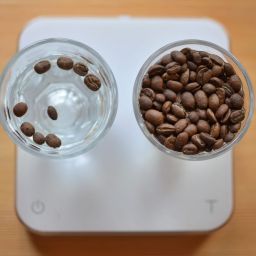
Espresso is a concentrated coffee beverage brewed by forcing a small amount of nearly boiling water through finely-ground coffee beans. Originating in Italy in the early 20th century, espresso has become a cornerstone of coffee culture worldwide. What sets it apart is its method of preparation, which yields a thicker consistency, higher concentration of suspended and dissolved solids, and crema (a creamy foam) on top.
Essential Equipment
The Right Espresso Machine
The heart of making espresso lies in choosing the right machine. There are several types, from manual lever machines to semi-automatic, automatic, and super-automatic models. Manual machines offer more control but require skill and practice. Semi-automatic machines balance manual intervention and automated features, making them popular among enthusiasts. Automatic machines simplify the process, while super-automatics do everything, including grinding the beans.
Quality Grinder
A high-quality grinder is crucial. Espresso requires a very fine and consistent grind. Burr grinders are preferable to blade grinders, as they provide uniformity and precision. The ability to make micro-adjustments is essential for dialing in the perfect grind size.
Other Accessories
- Tamper: For evenly compressing the coffee in the portafilter.
- Knock Box: For disposing of used grounds.
- Scale: Precision in coffee-to-water ratio is key.
- Thermometer: For steaming milk at the right temperature (if making milk-based espresso drinks).
Selecting Coffee Beans
Roast Profile
The roast profile significantly impacts the flavor of your espresso. Generally, medium to dark roasts are preferred for their fuller body and lower acidity. These roasts highlight the chocolatey, nutty, and caramel notes ideal for espresso.
Bean Origin
Single-origin beans can offer unique and distinct flavors, while blends are crafted to achieve a balanced profile, suitable for espresso. Experiment with beans from different regions to discover your preference.
Freshness
Freshly roasted beans are vital for a great espresso. Look for beans roasted within the past two weeks and use them within a month of opening.
Grinding the Coffee
The Importance of Grind Size
Grind size plays a crucial role in espresso making. Too fine, and your espresso might be over-extracted, tasting bitter; too coarse, and it could be under-extracted, resulting in a weak, sour shot. Aim for a consistency similar to table salt.
Consistency is Key
A uniform grind is just as important. Irregular grinds can cause uneven extraction. Burr grinders are superior in achieving a consistent grind. Regularly cleaning your grinder will also ensure consistency.
Adjusting Your Grind
You might need to adjust the grind size based on the coffee’s age, type, and your machine. Start with the manufacturer’s recommendation and tweak from there based on the taste.
Mastering the Espresso Machine
Familiarizing with Your Machine
Each espresso machine has its unique characteristics. Start by reading the manual to understand its specific features and maintenance needs.
Warming Up
Always warm up your machine and portafilter. A cold machine or portafilter can shock the coffee, leading to poor extraction.
Dosing and Tamping
Measure your coffee grounds accurately using a scale. About 18-20 grams is standard for a double shot. Distribute the grounds evenly in the portafilter and tamp with consistent pressure to avoid channeling, where water passes through the coffee unevenly.
Pulling the Shot
Lock the portafilter into the machine and start the shot. A good espresso shot typically takes 25-30 seconds to brew. Watch the flow; it should be like warm honey. Adjust the grind size, tamping pressure, or dose if the timing is off.
Cleaning and Maintenance
After each shot, clean the portafilter and group head. Regularly descale and clean your machine as per the manufacturer’s guidelines to ensure longevity and consistent taste.
The Art of Tamping
Why Tamping Matters
Tamping compresses the coffee grounds evenly, creating a flat surface that ensures uniform water contact during extraction. Incorrect tamping can lead to under-extraction or over-extraction, affecting the taste of your espresso.
Tamping Technique
- Even Distribution: Before tamping, ensure the grounds are evenly distributed in the portafilter.
- Pressure: Apply around 30 pounds of pressure. Be consistent with the pressure each time.
- Alignment: Keep the tamper and your arm straight to avoid an uneven tamp.
- Twist Finish: After pressing down, give a gentle twist to seal the grounds.
Practice Makes Perfect
Tamping correctly takes practice. Consider using a tamping mat to protect your counter and a calibrated tamper for consistent pressure.
Brewing the Perfect Shot
Understanding Extraction
Extraction is the process of hot water flowing through the coffee grounds to extract flavors. The goal is to achieve a balanced extraction, where all desirable flavors are extracted without over-extracting bitter compounds.
Dialing In Your Shot
- Ratio: Start with a 1:2 coffee-to-water ratio. For 20 grams of coffee, aim for 40 grams of espresso.
- Temperature: The ideal brewing temperature is around 200°F. Some machines allow temperature adjustments.
- Pressure: Most machines brew at 9 bars of pressure. Consistent pressure is key for even extraction.
Observing the Shot
- First Drips: Espresso should start dripping within 5-10 seconds after starting the shot.
- Flow Rate: The flow should be steady and honey-like, not too fast or too slow.
- Color Change: Initially, the espresso will be dark, then it transitions to a golden brown. Stop the shot when it blondes.
Adjustments
If the shot is too fast, fine-tune your grind to be finer, increase your tamping pressure, or use more coffee. If it’s too slow, do the opposite.
Consistency
Record your process (grind size, dose, yield, and brew time) for consistency. Small changes can make a big difference.
Milk Steaming and Latte Art
Steaming Milk
To create the perfect milk for lattes or cappuccinos, start with cold, fresh milk. Fill a metal steaming pitcher about halfway. Place the steam wand tip just below the surface of the milk and turn on the steam. The milk should whirlpool, incorporating air and creating microfoam. Aim for a temperature between 150°F to 155°F for optimal sweetness and texture.
Creating Latte Art
- Consistency: The milk should be velvety and glossy, similar to wet paint.
- Pouring Technique: Start with the pitcher high above the cup and pour steadily. As the cup fills, bring the pitcher closer for finer control.
- Creating Patterns: Simple patterns like a heart or rosetta require practice. Move the pitcher smoothly and with confidence.
Troubleshooting and Tips
Common Issues and Solutions
- Sour Espresso: Usually a sign of under-extraction. Try a finer grind, increase brewing time, or use more coffee.
- Bitter Espresso: Indicates over-extraction. Coarsen the grind, shorten the brew time, or reduce the coffee dose.
- Weak Crema: Could be due to stale beans, not enough coffee, or too coarse a grind.
- Channeling: Visible as uneven streams or blonding early. Ensure even distribution and consistent tamping.
Expert Tips
- Keep Beans Fresh: Store your beans in an airtight container away from light and moisture.
- Regular Maintenance: Clean your machine and grinder regularly for consistent quality and taste.
- Water Quality: Use filtered water to prevent scale buildup and maintain the flavor integrity of your espresso.
- Experiment: Don’t be afraid to try different beans, grind sizes, and brewing parameters to find your perfect espresso.
Conclusion
Making the perfect espresso is a journey of learning and experimentation. It combines the science of extraction with the art of coffee making. Remember, the key to great espresso lies in understanding your equipment, choosing quality beans, and refining your technique through practice. Embrace the process, and don’t be discouraged by initial imperfections. Each cup of espresso you craft is a step towards mastering this beloved art form. Happy brewing, and may your espressos be as rewarding as they are delicious!









